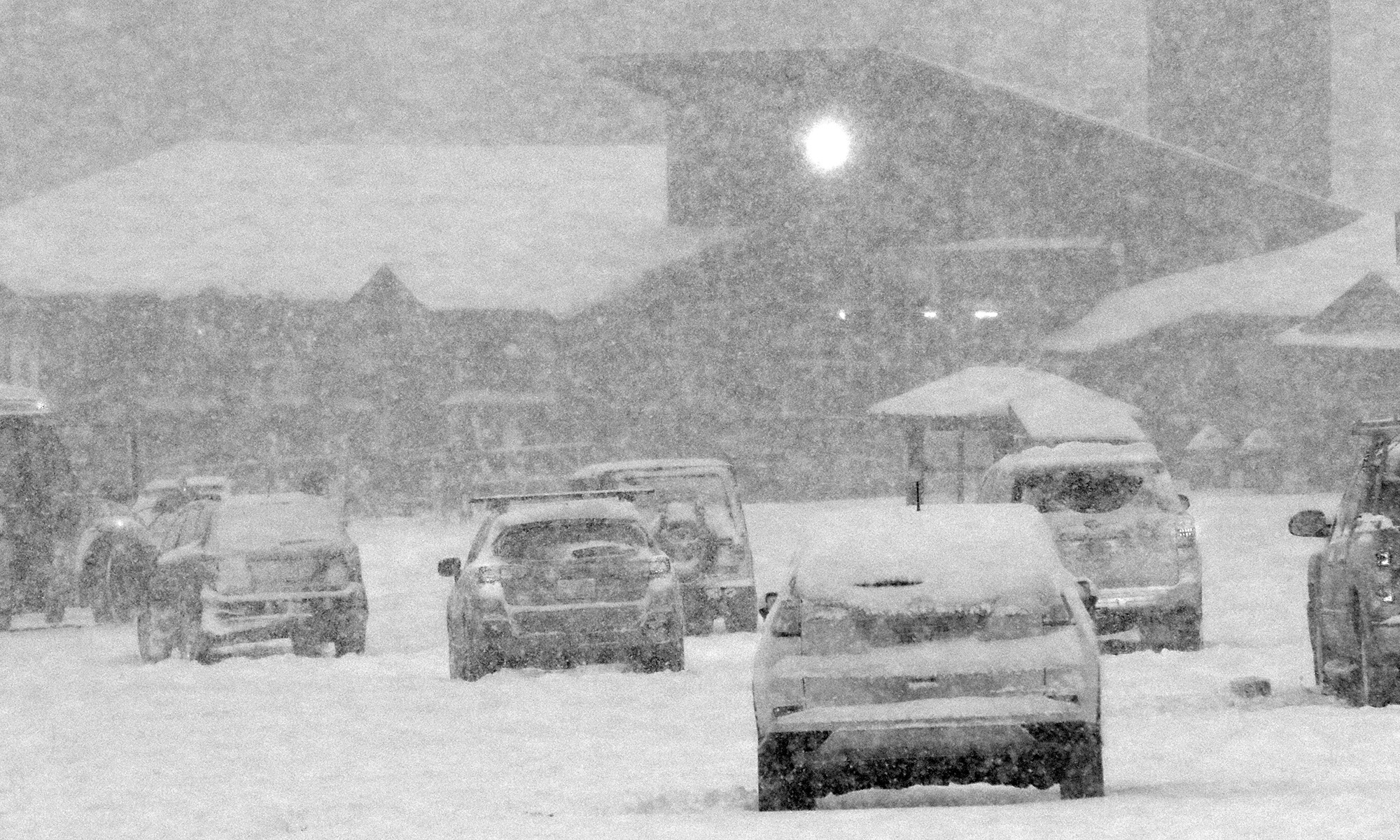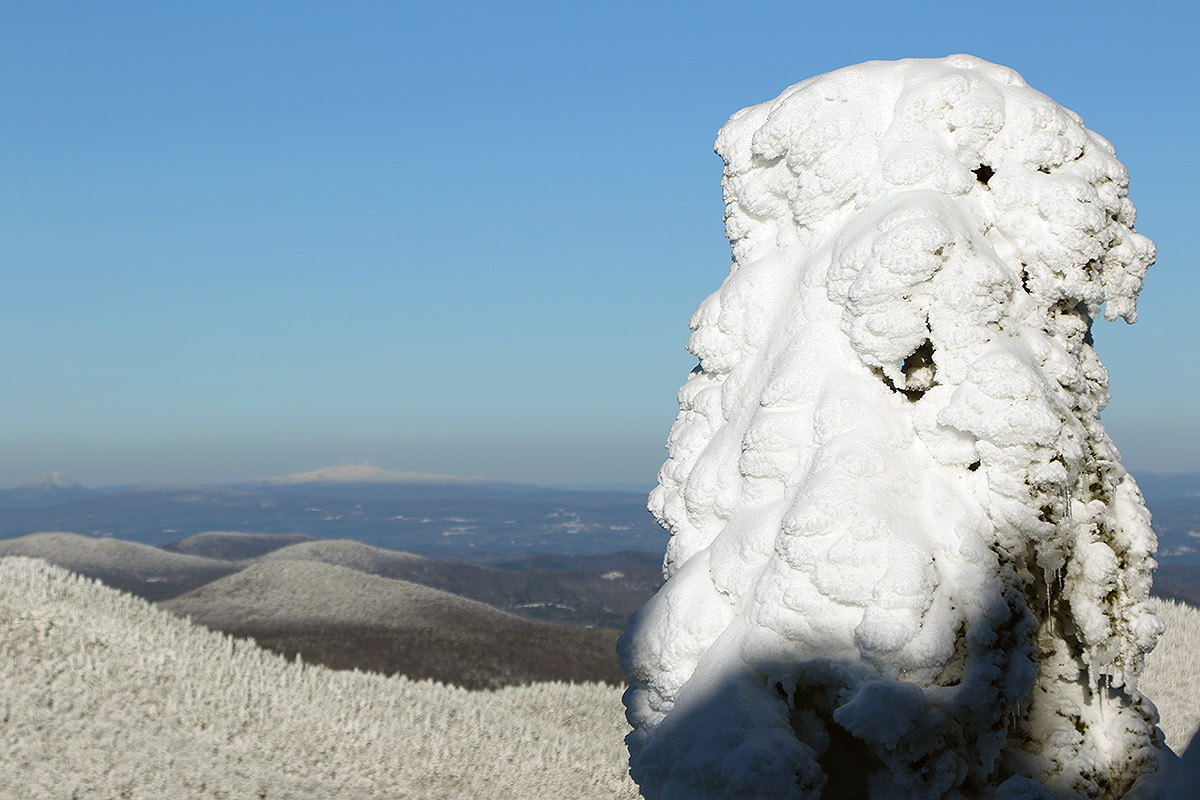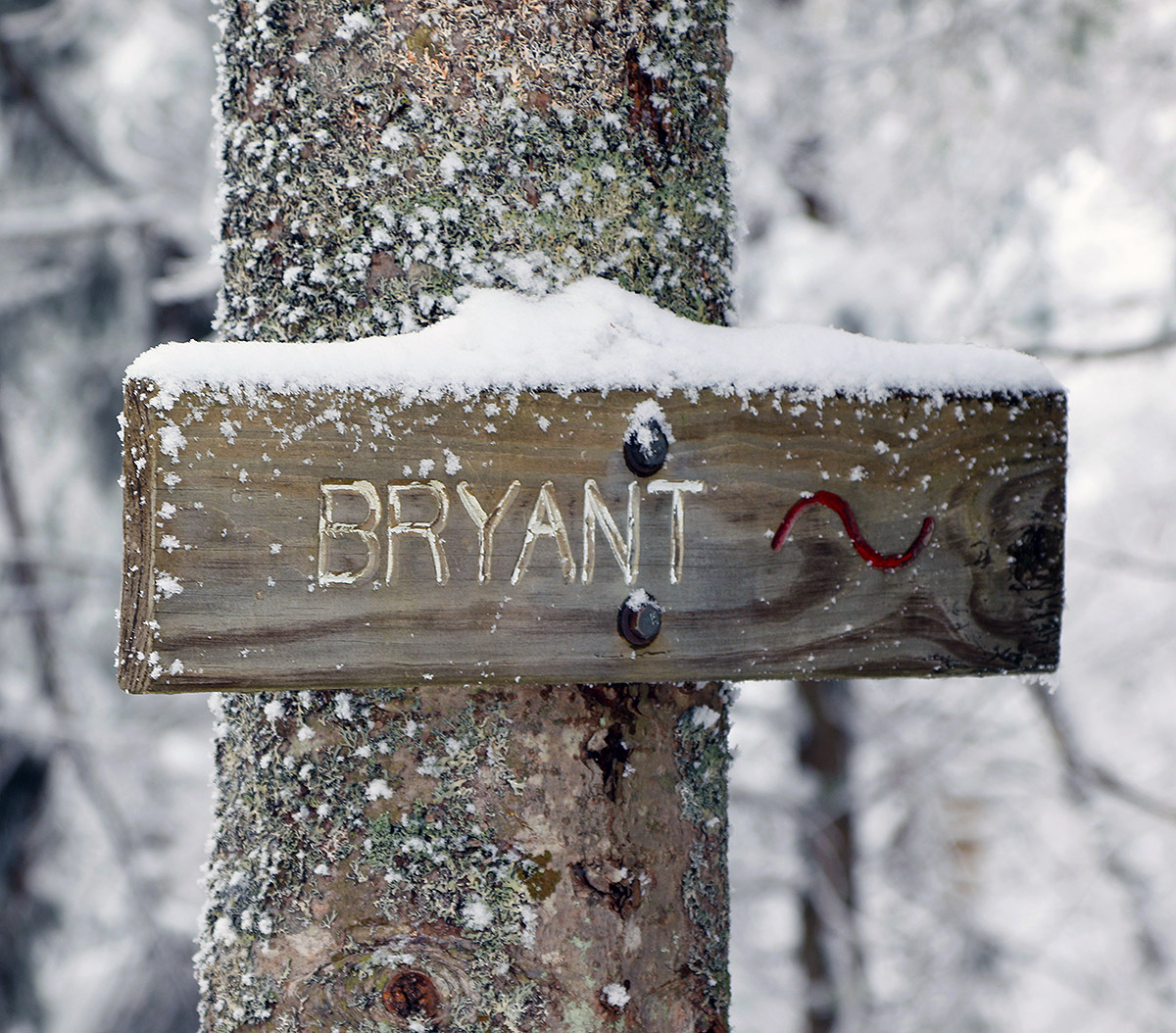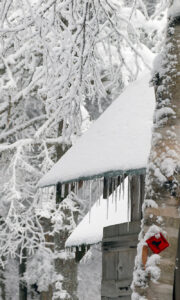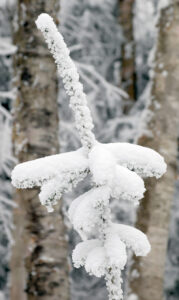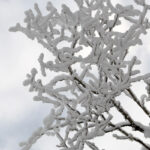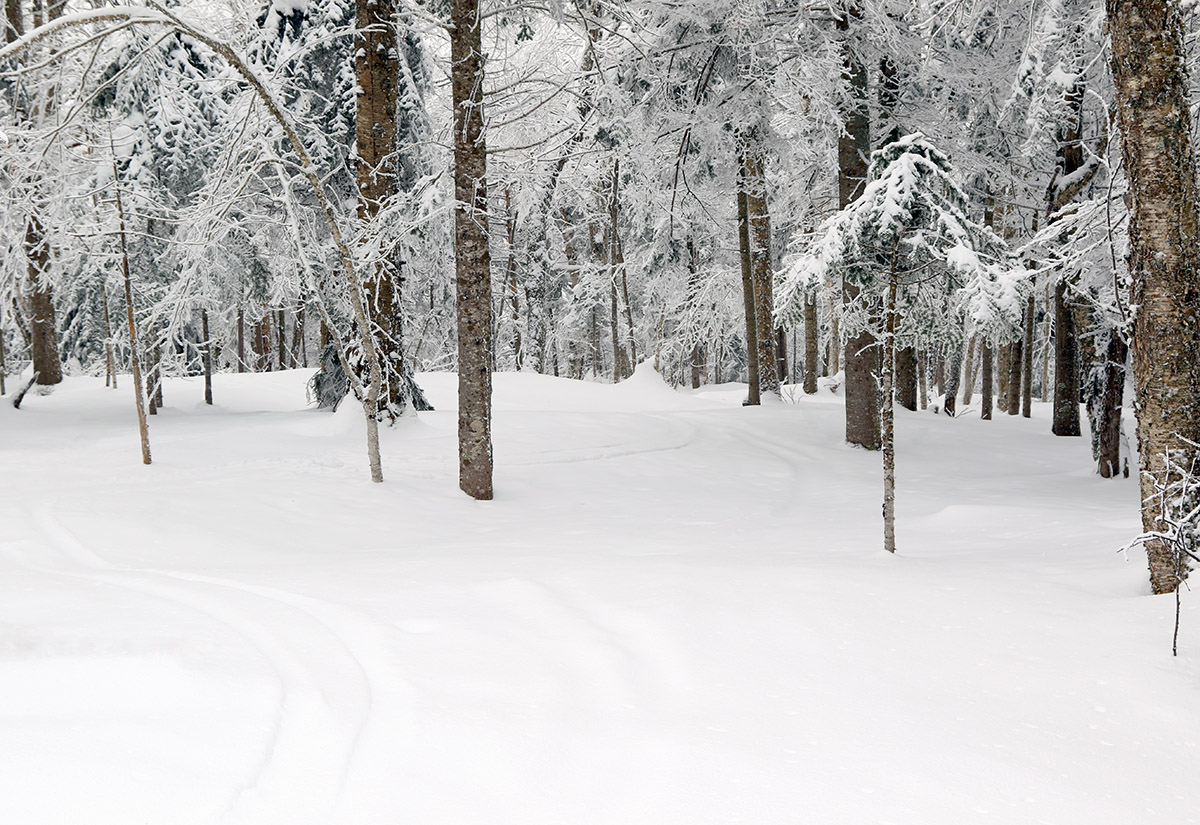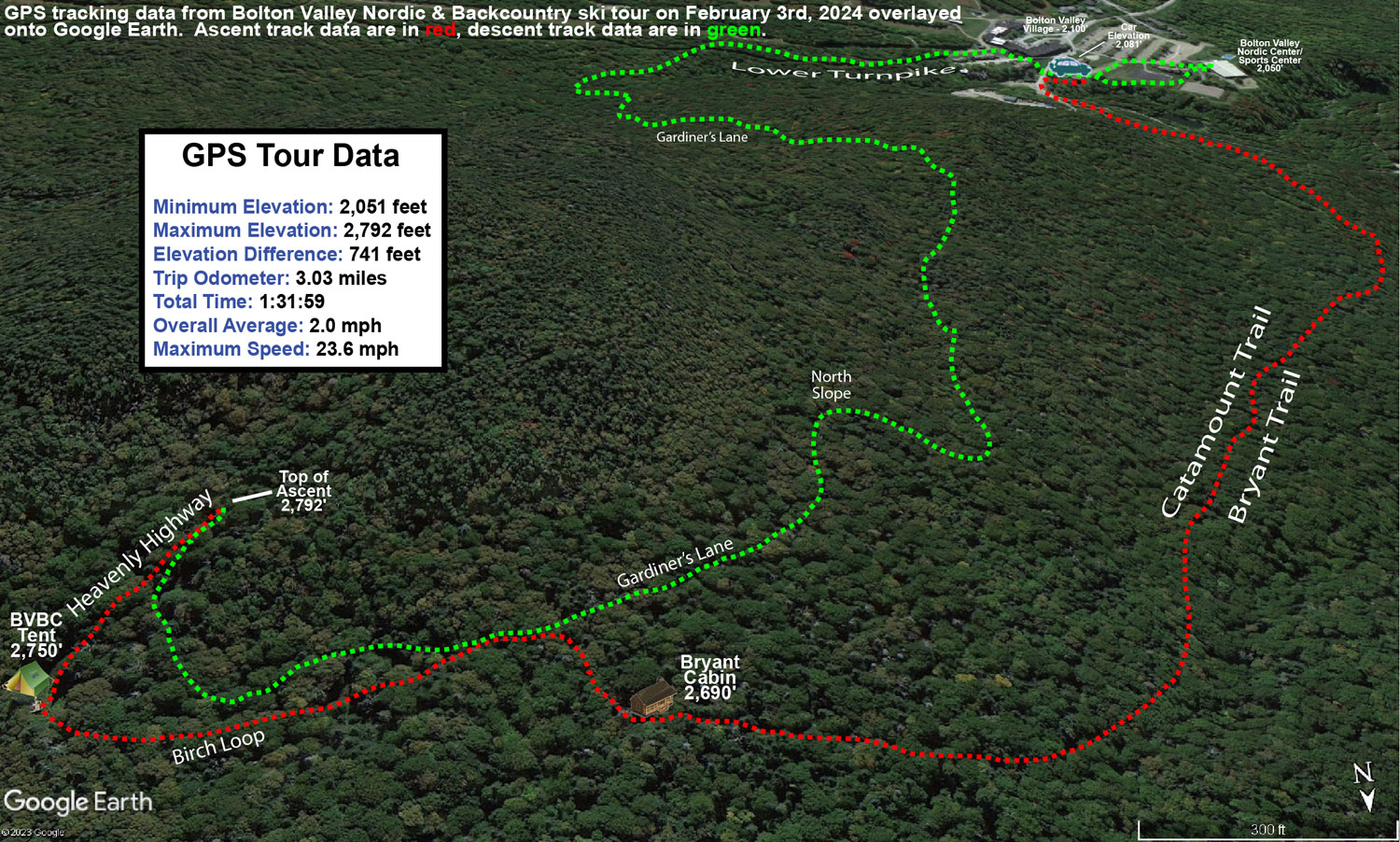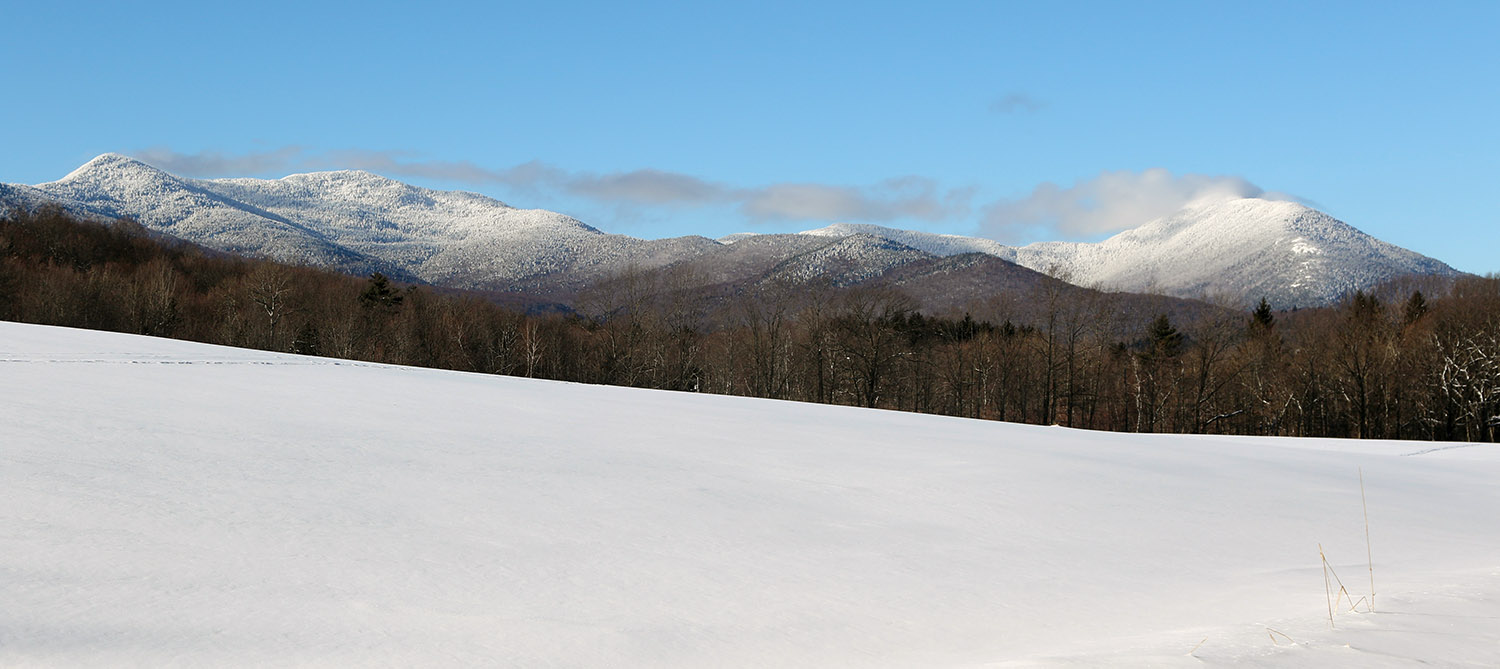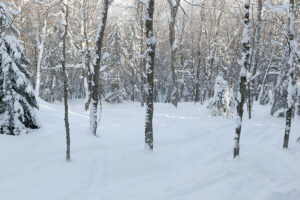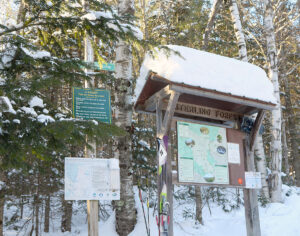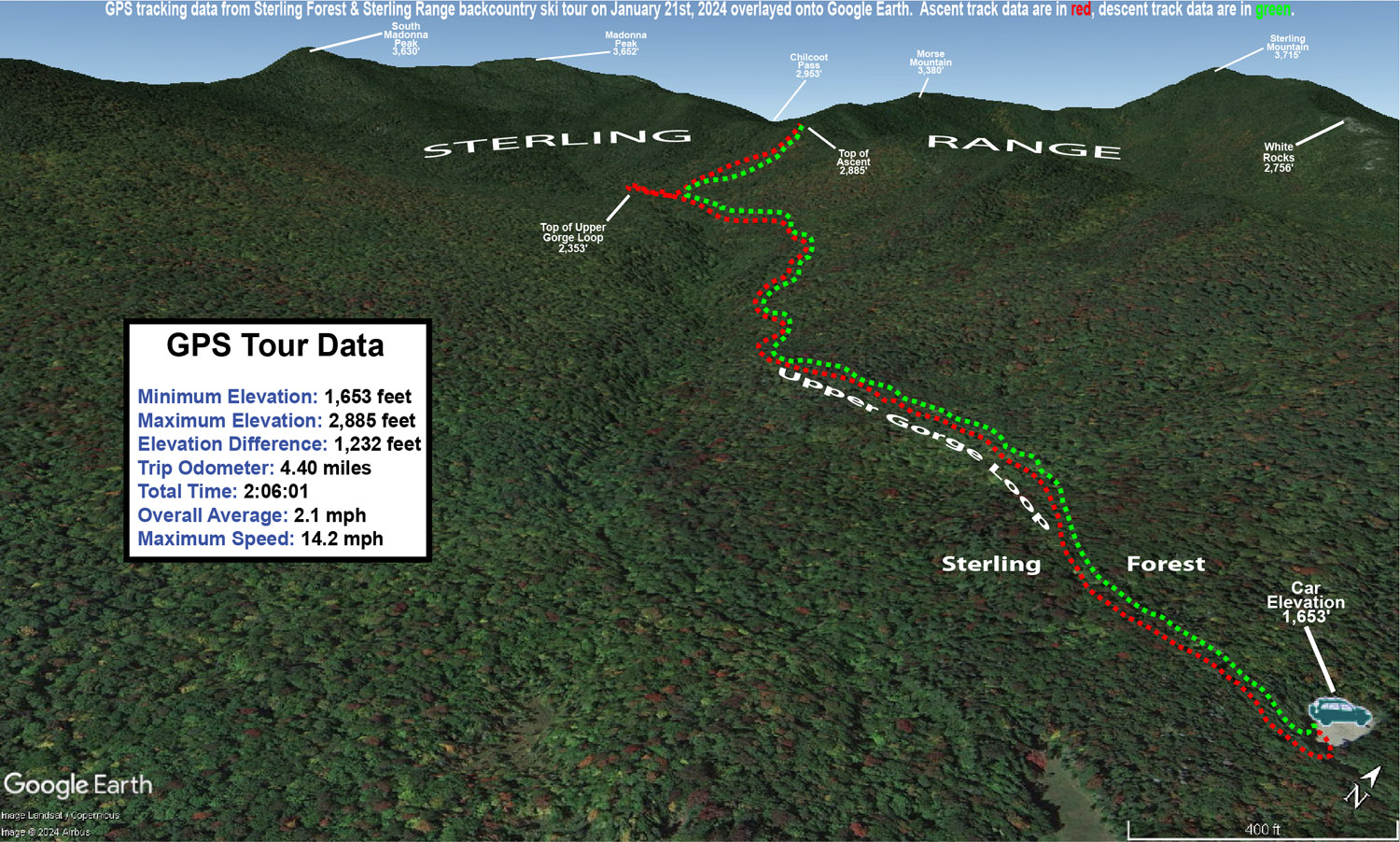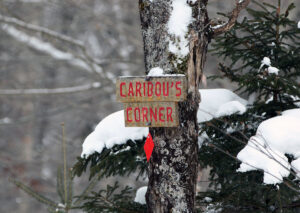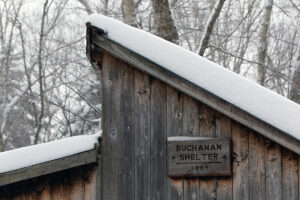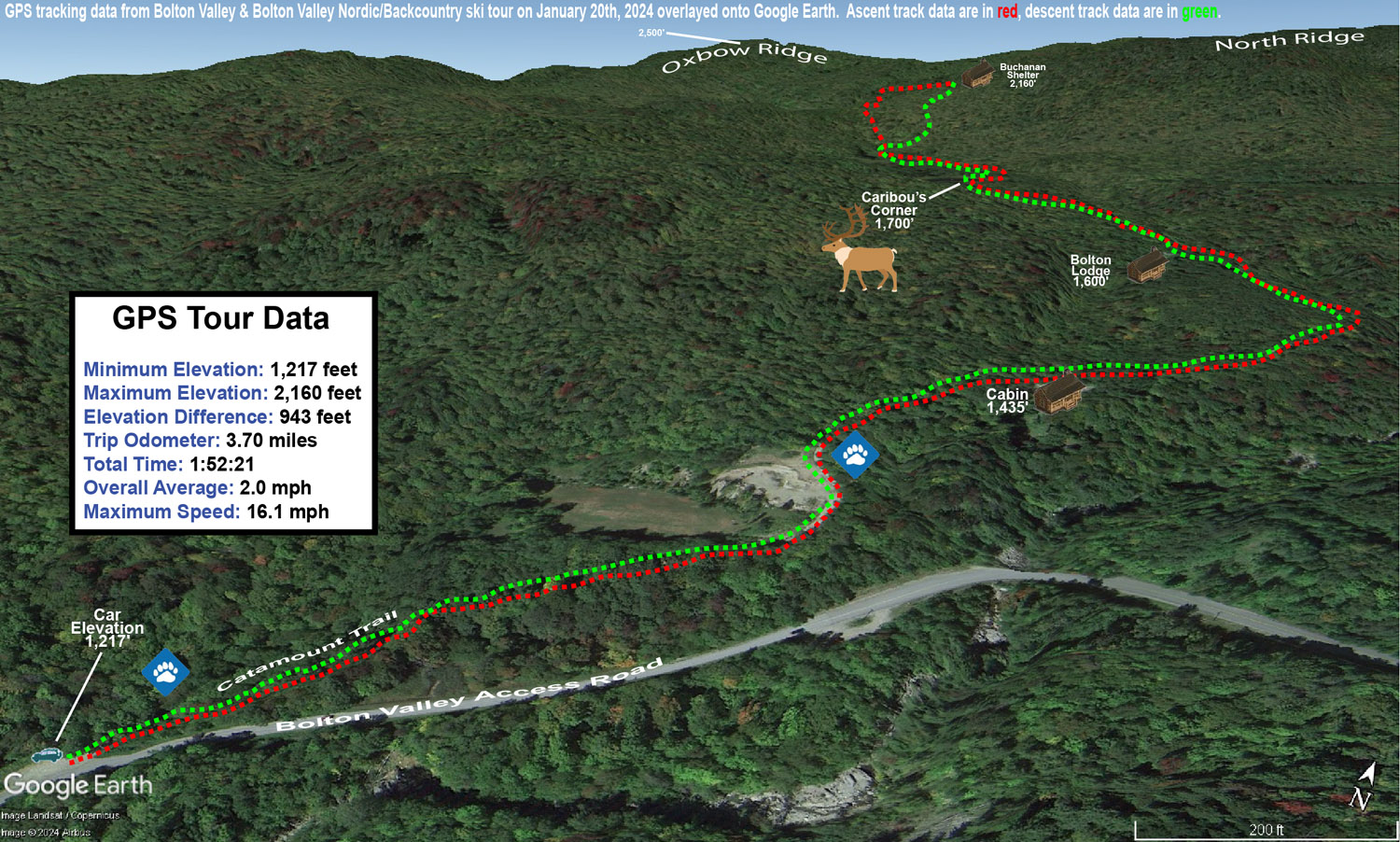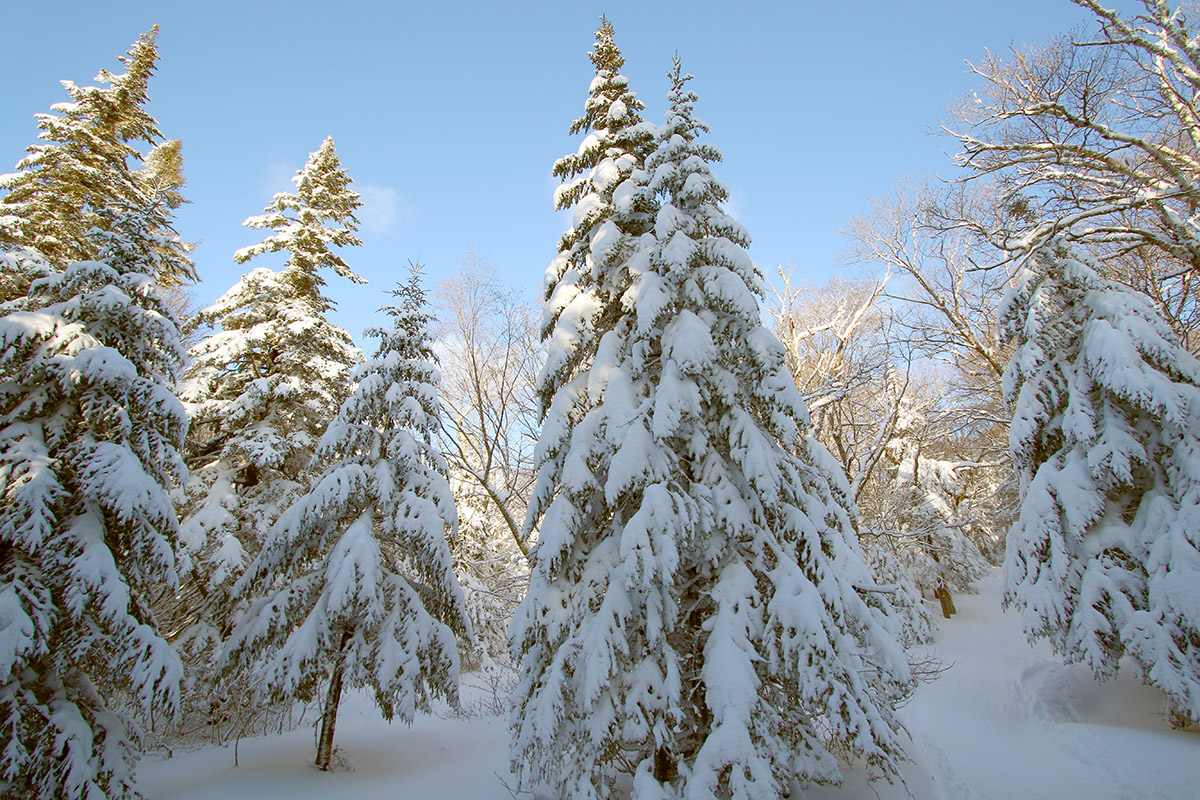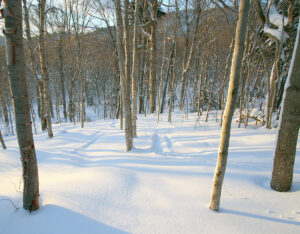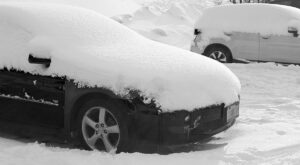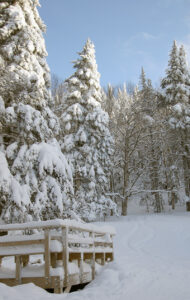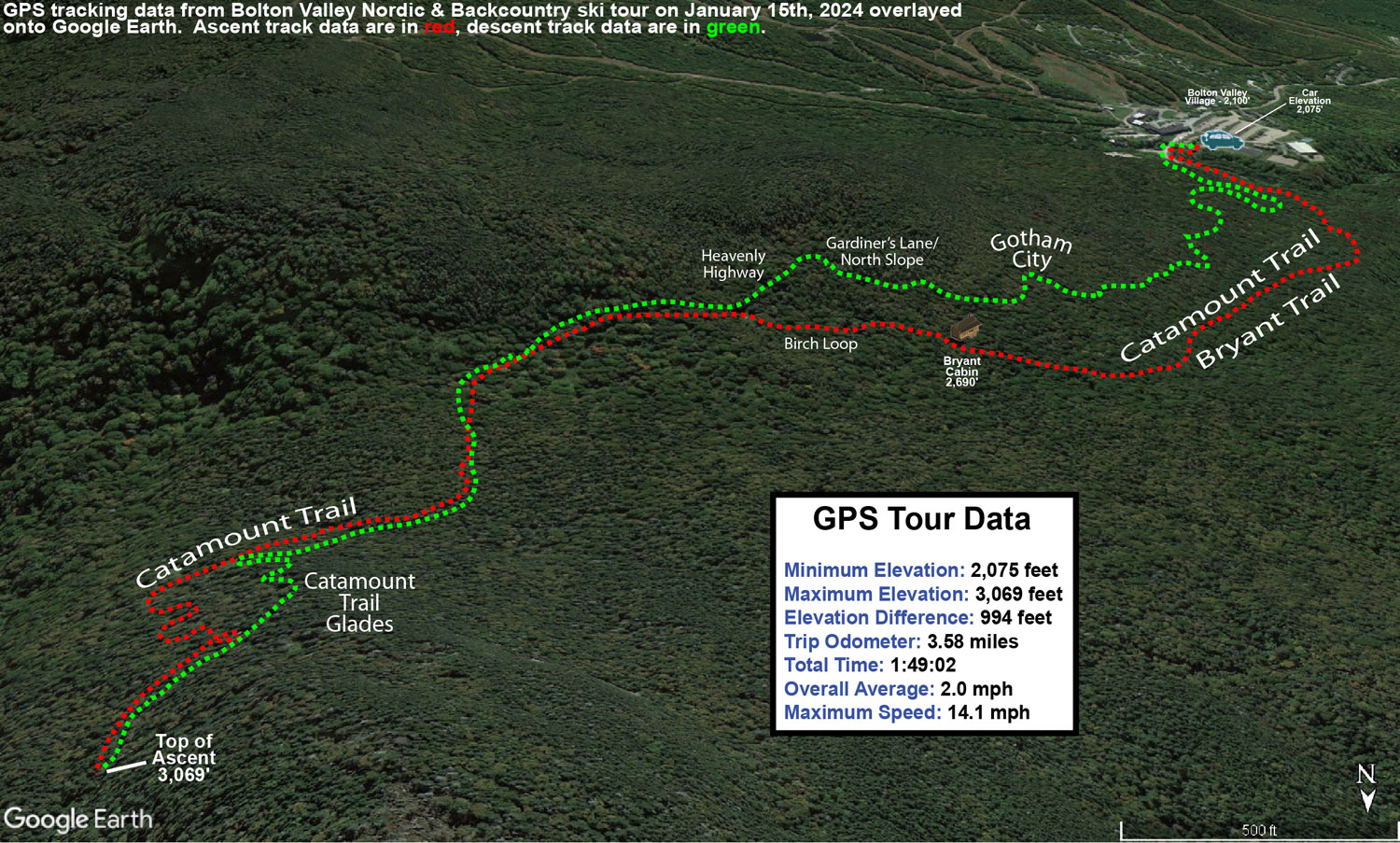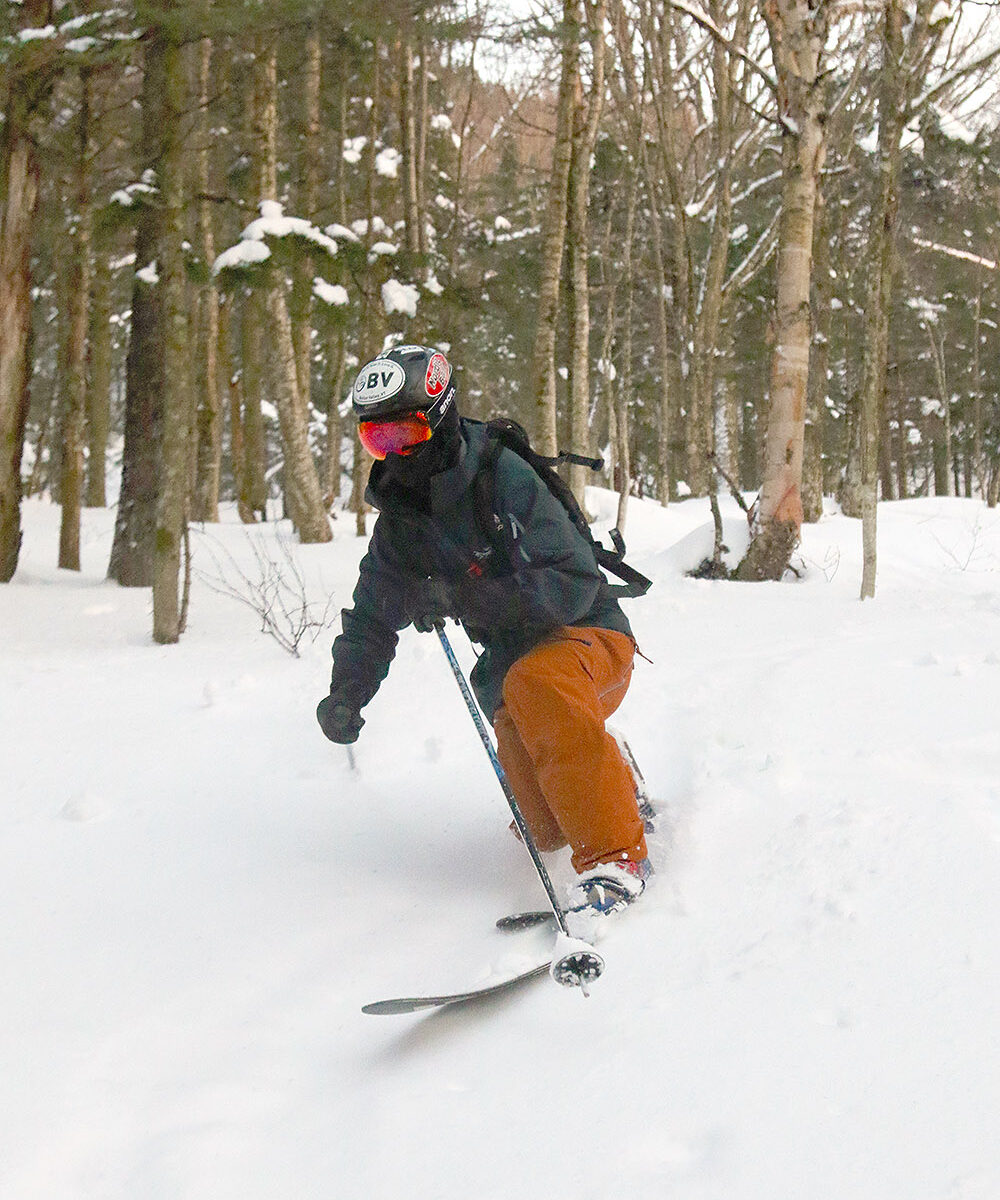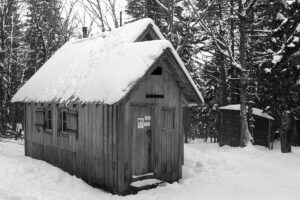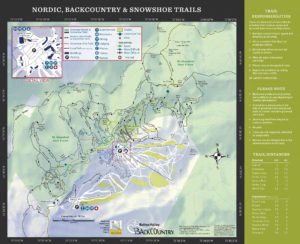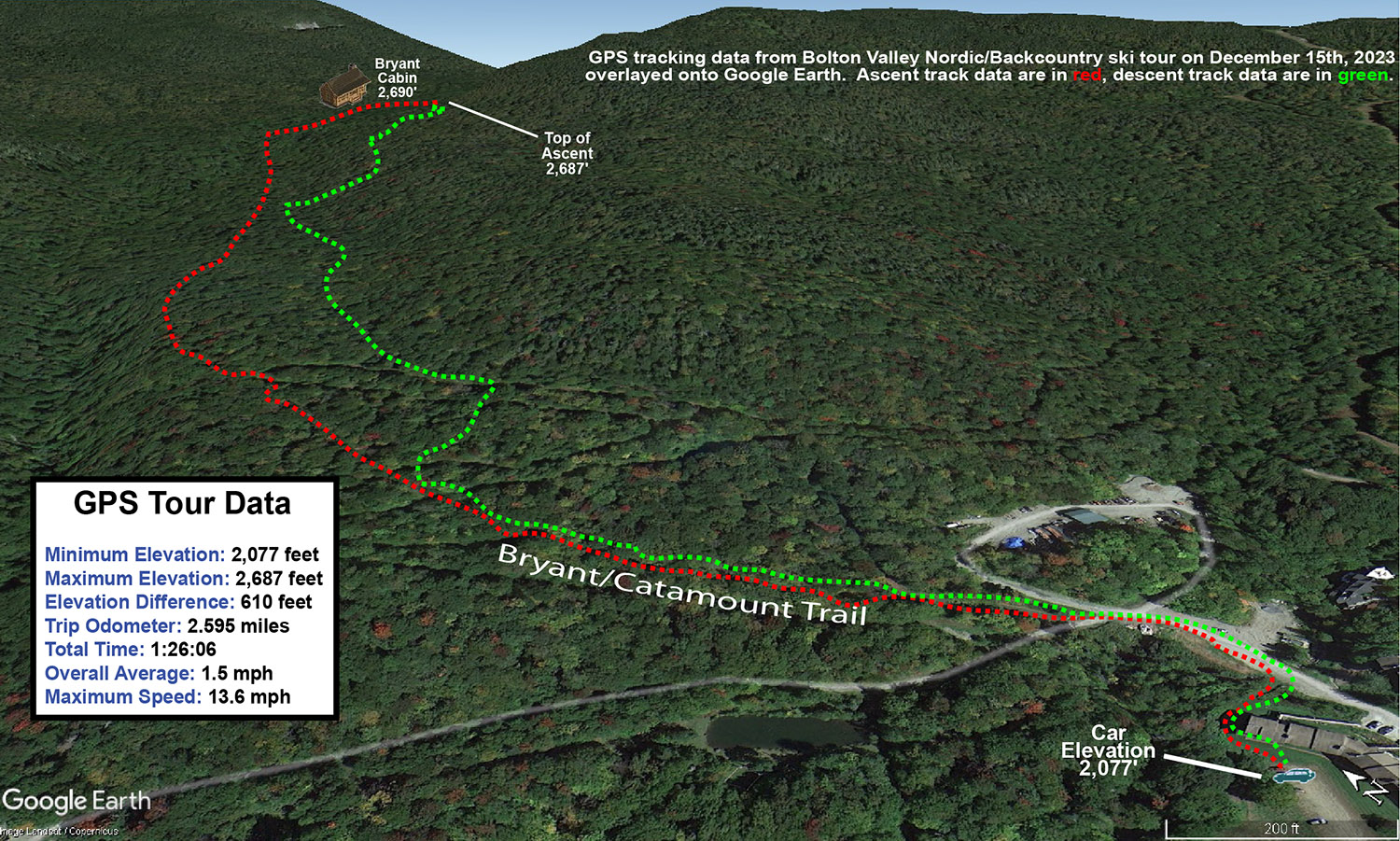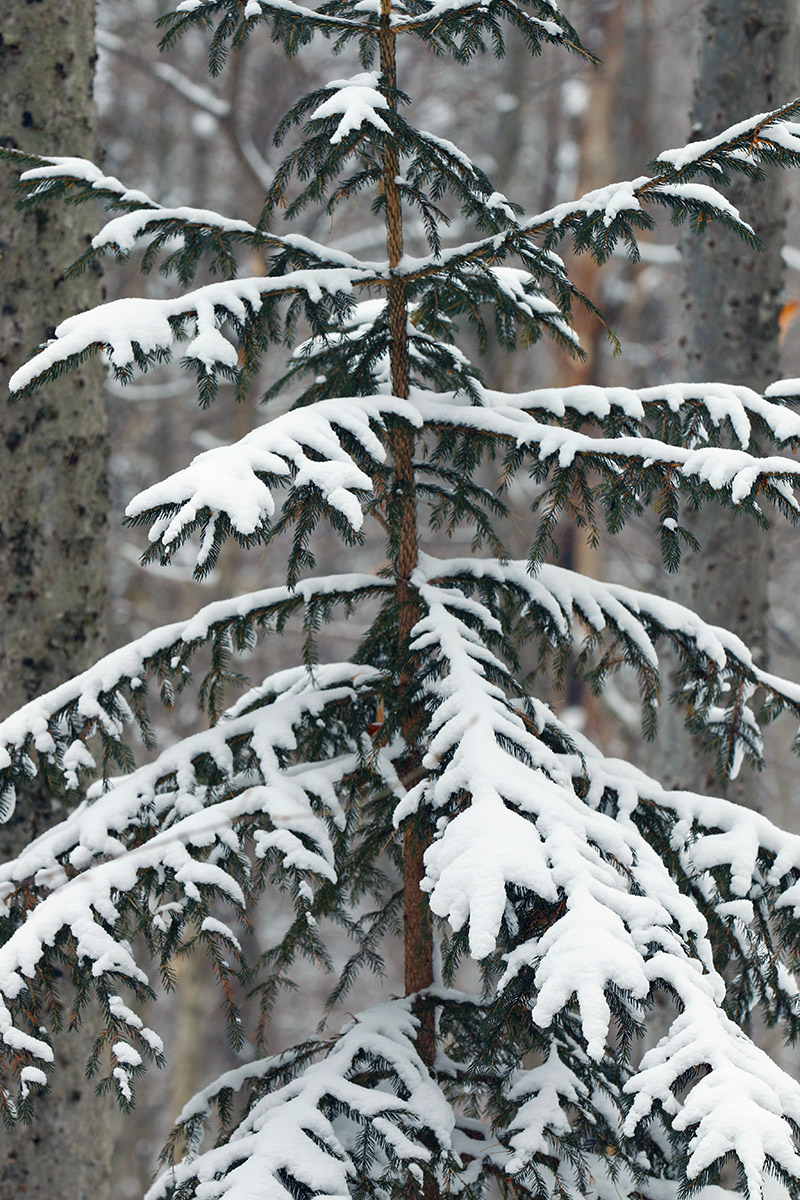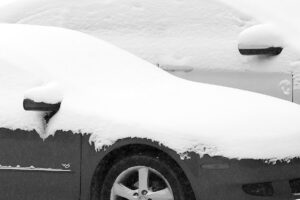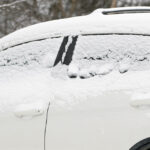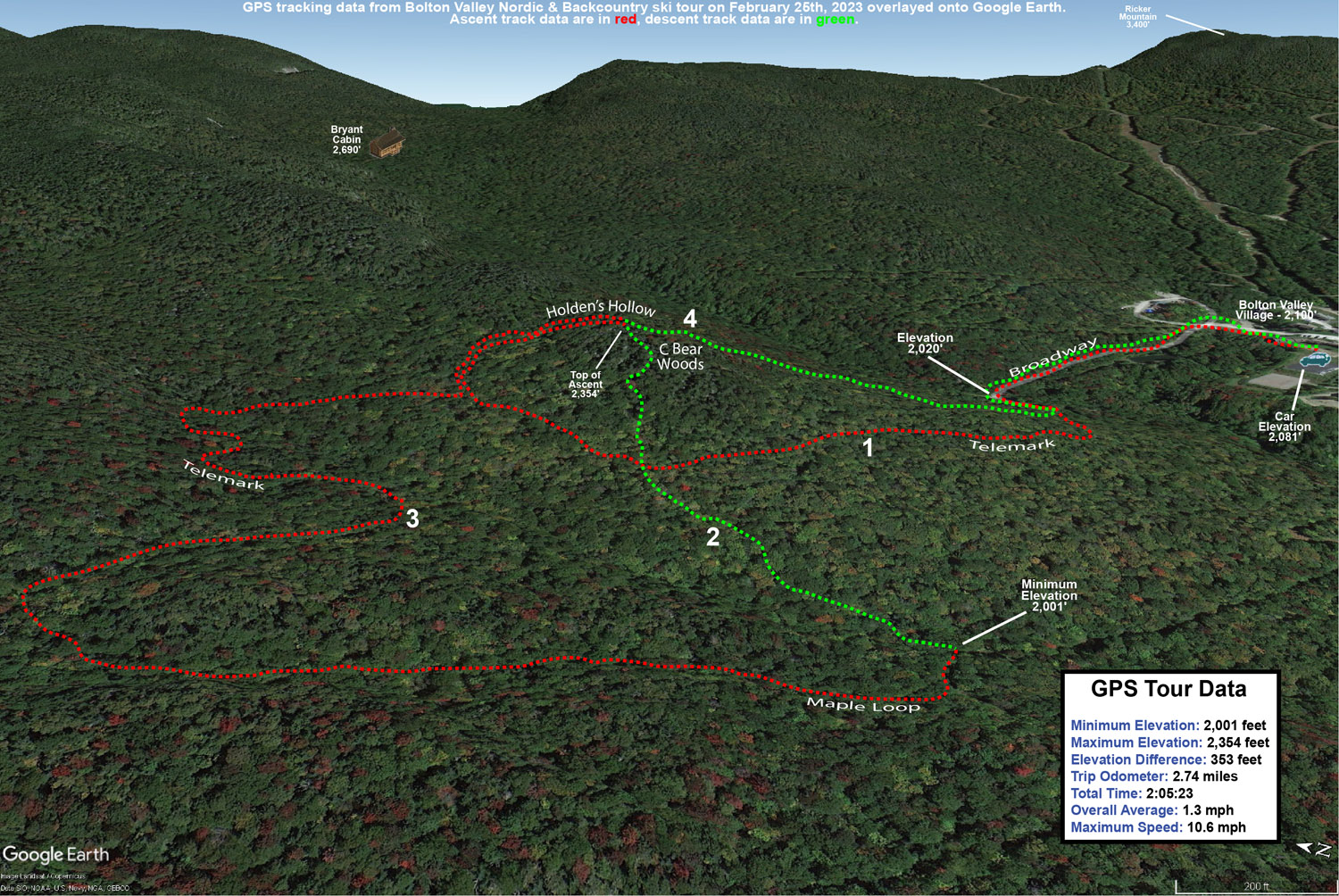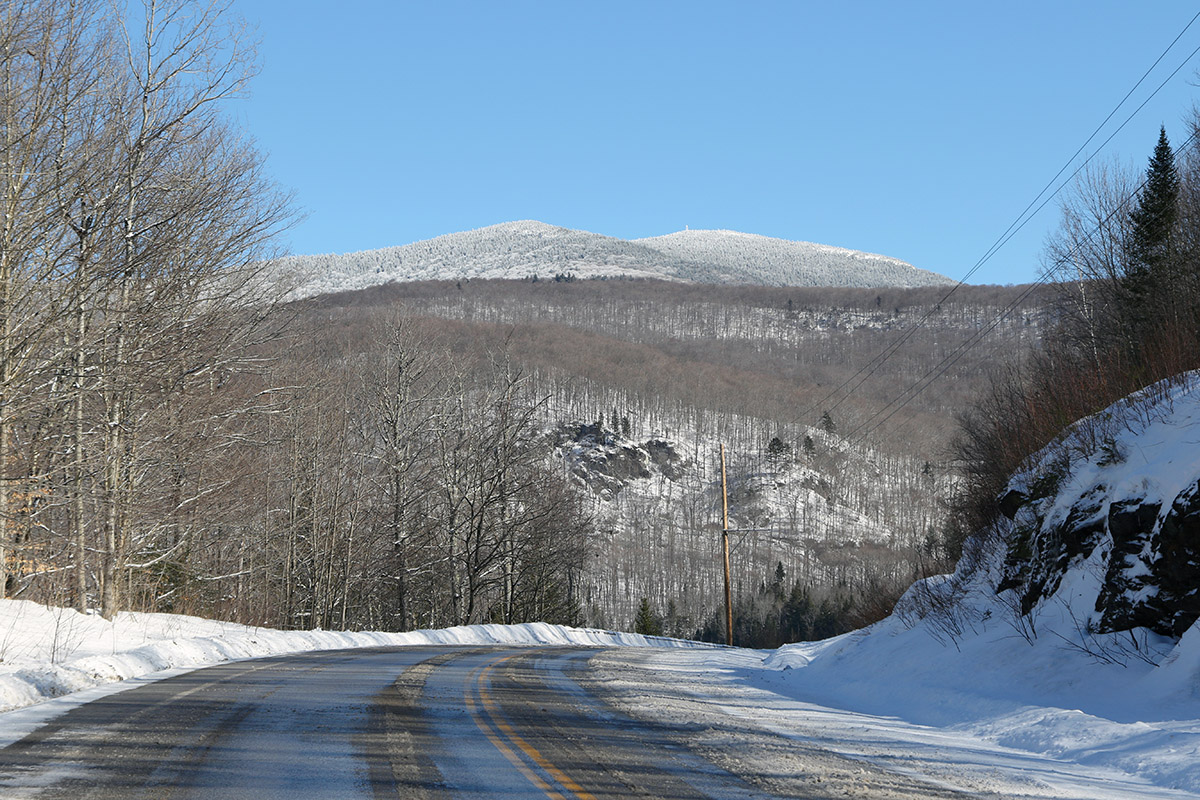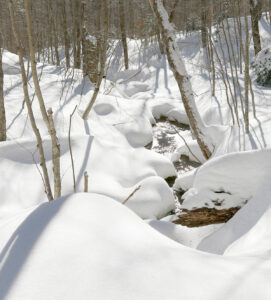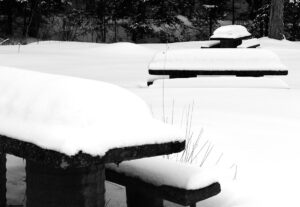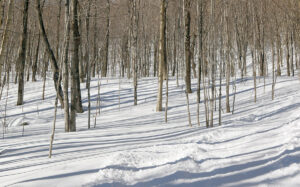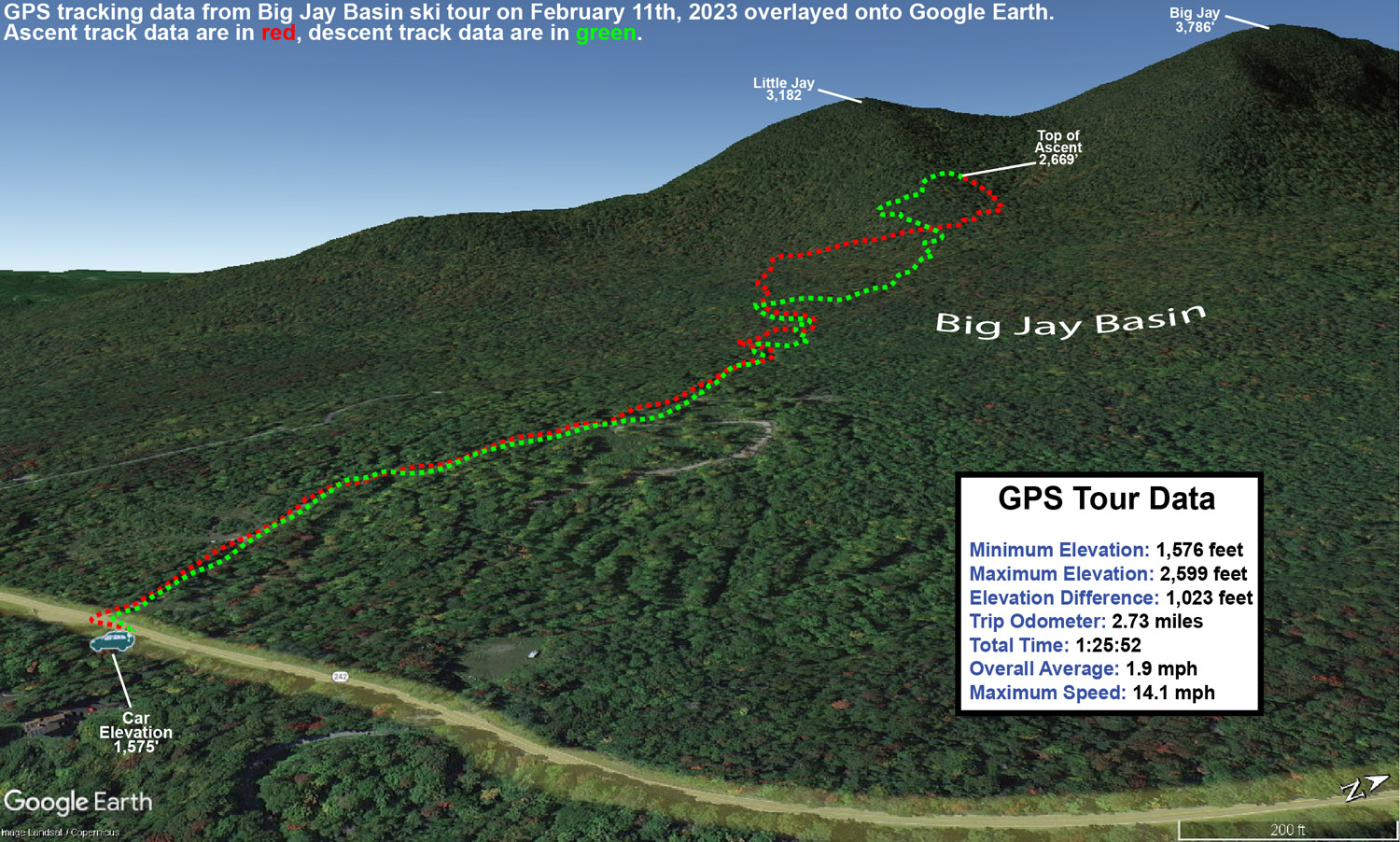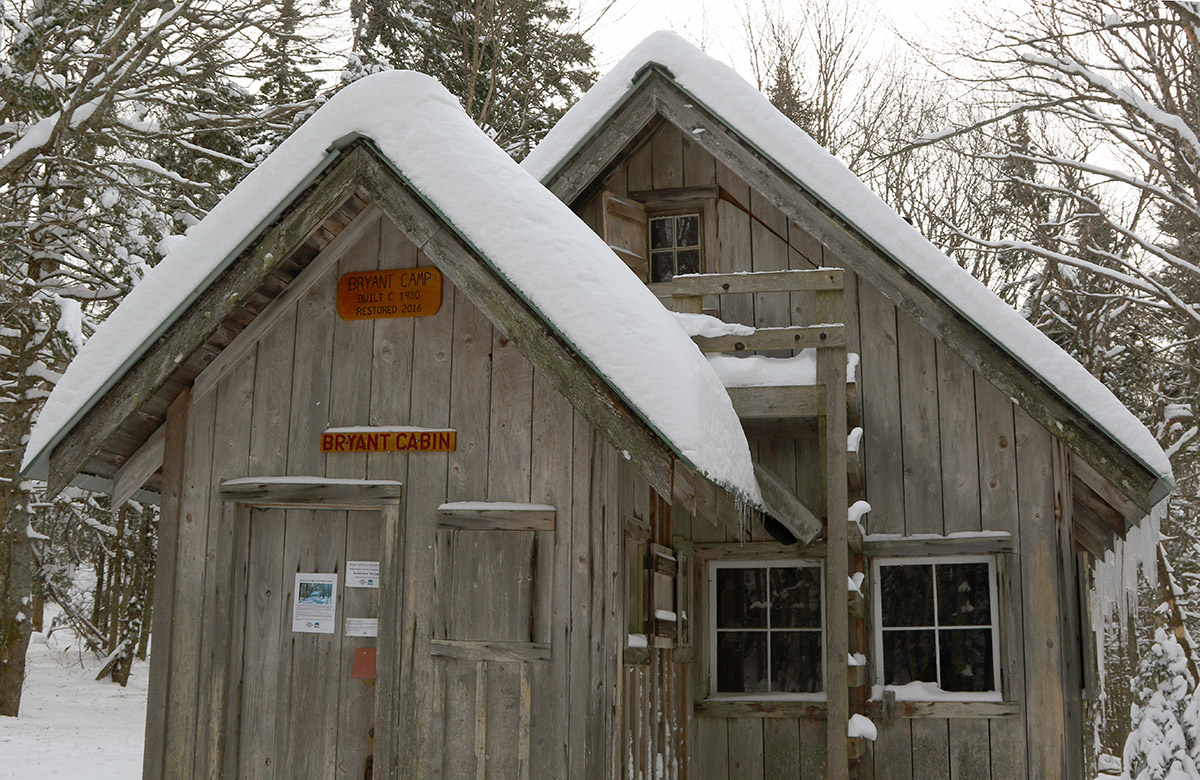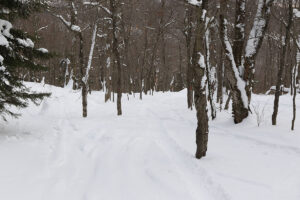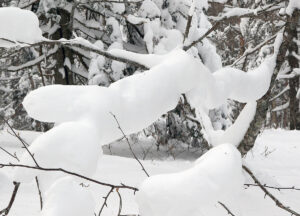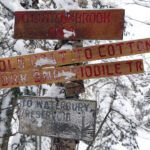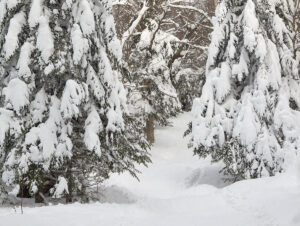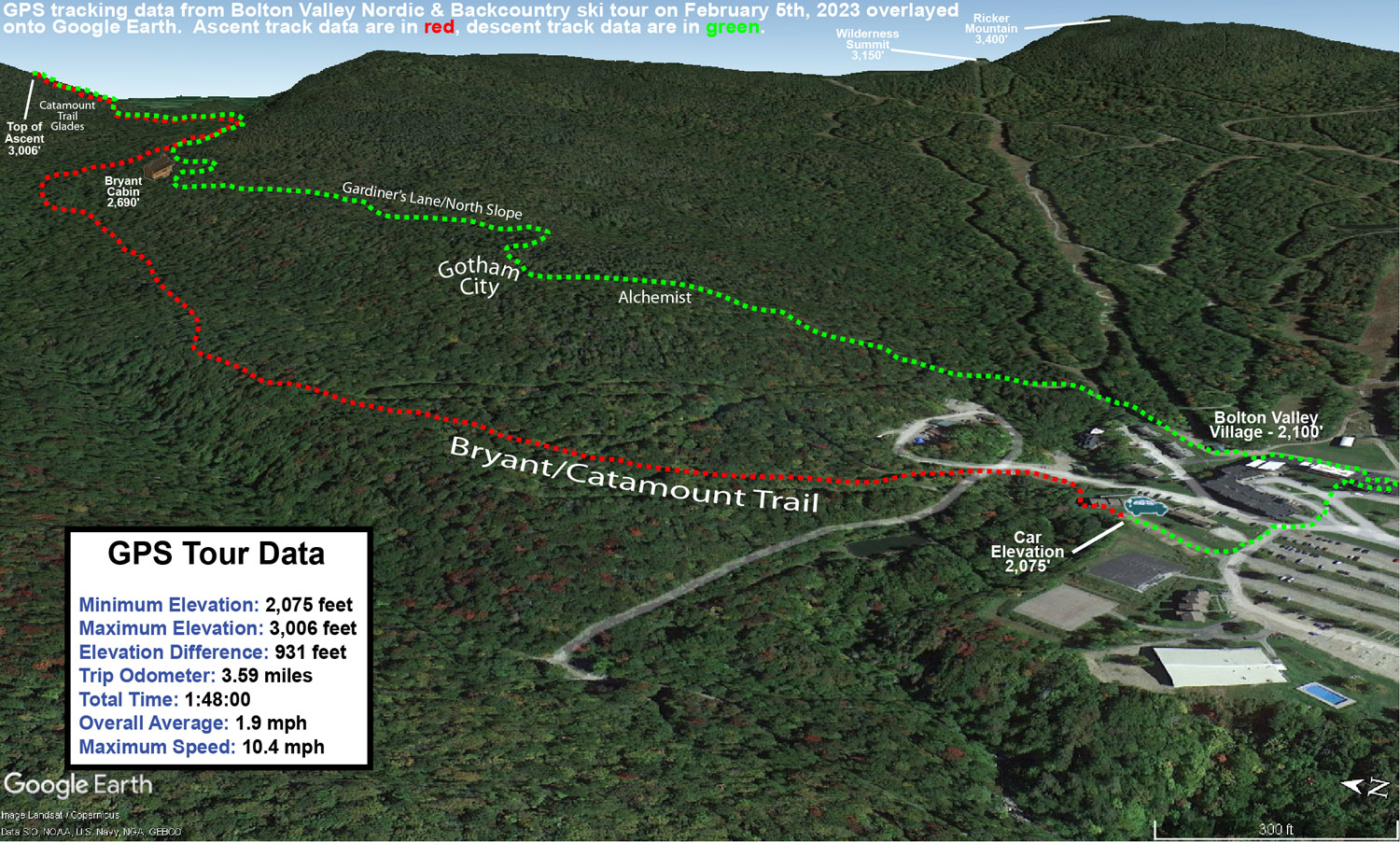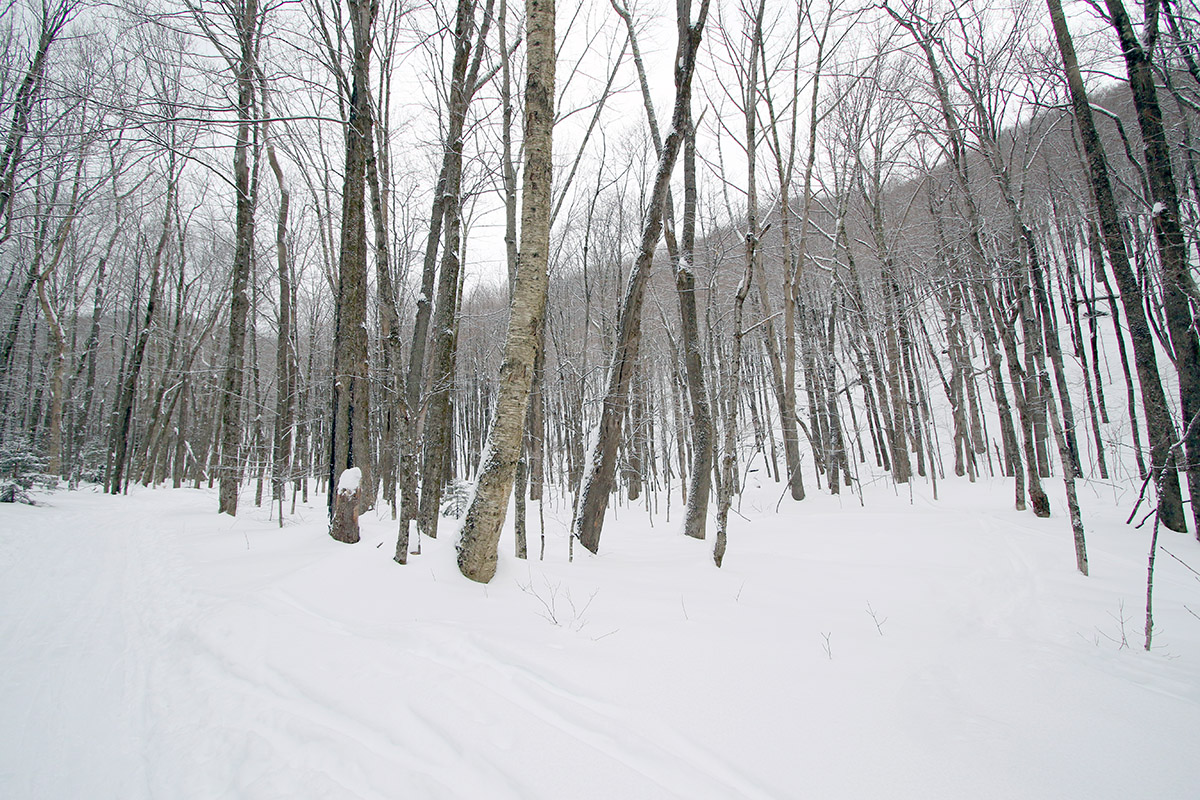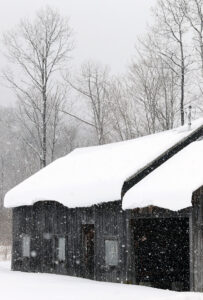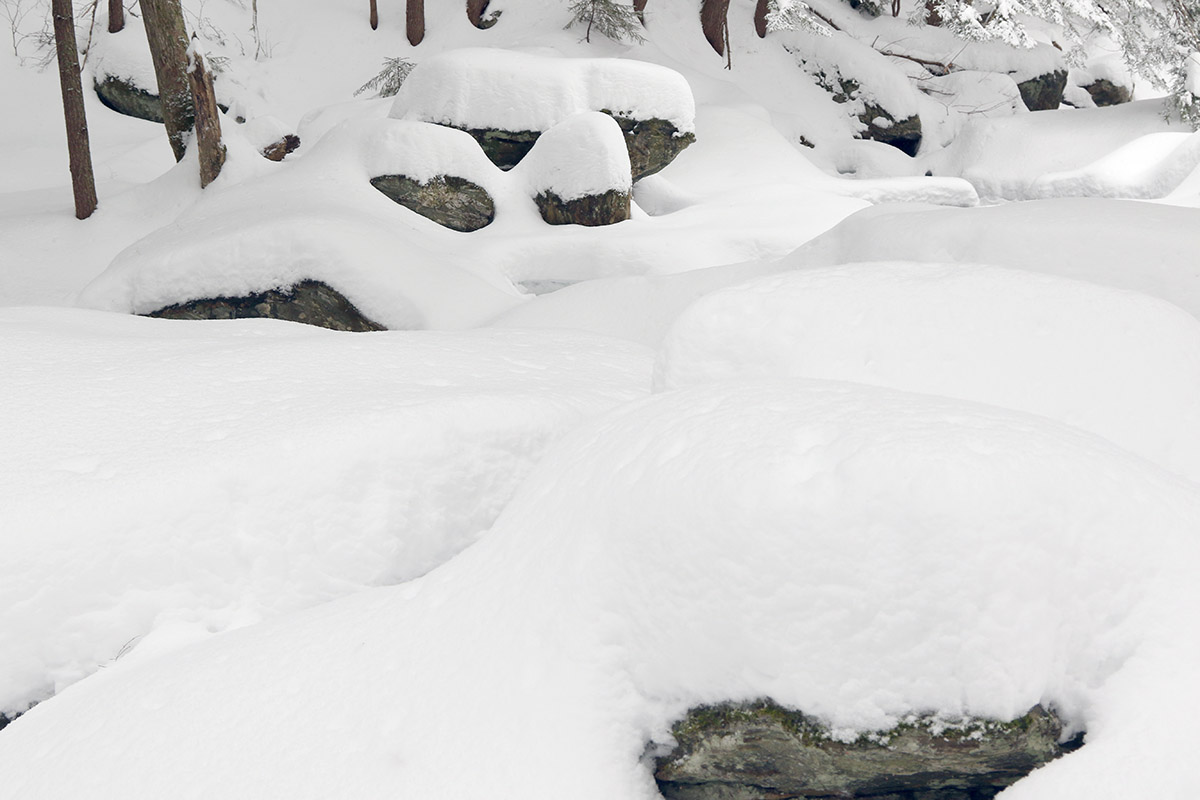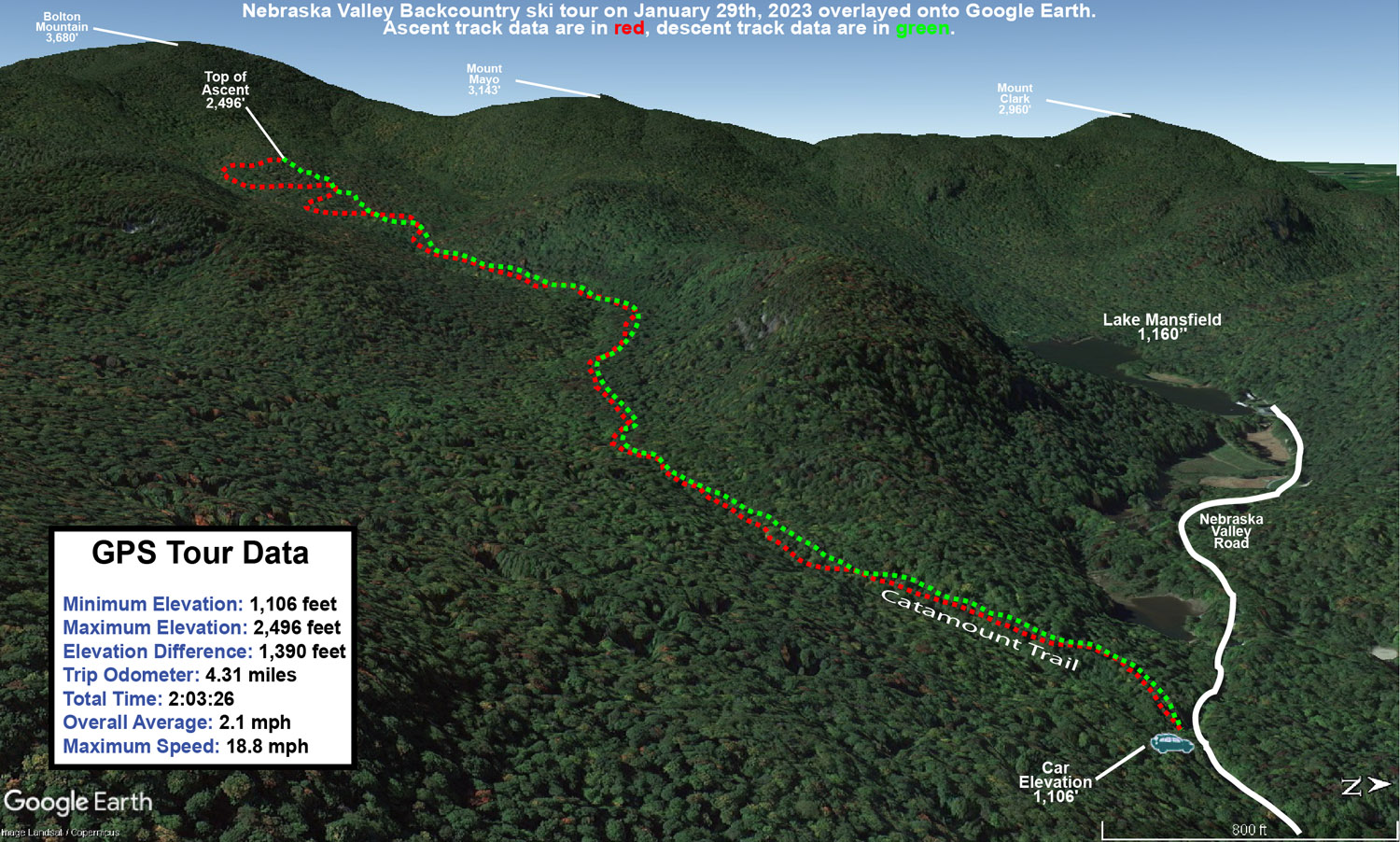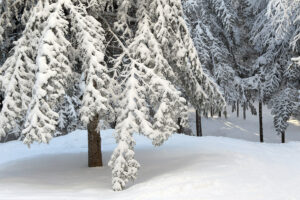
Today was gorgeous, but we’re definitely in a dry spell with respect to winter weather events. Relative to the usual frequency of winter storm in the Northern Greens at this time of year, the period we’re in right now feels like being in the middle of a desert. The little clipper system that came through at the end of the week would typically be just a blip in the storm parade, but in this case it was a much appreciated mini oasis for this stretch of winter. I wasn’t sure if I was going to ski at all this weekend, let alone get out for two sessions, but the way the new snow set up the low angle terrain for powder turns wound up creating some respectable conditions. And then of course there was today’s perfect midwinter weather with clear blue skies and temperatures pushing into the upper 20s F – that really sealed the deal to get out for another ski tour.
 On yesterday’s tour I hit a good collection of low angle terrain and explored some new spots that don’t typically lend themselves to great turns in deeper powder. Whereas yesterday I’d topped out around 2,800’ on Heavenly Highway, today I pushed out a bit father out toward Stowe View and topped out around 3,200’. Even up at that altitude, I wasn’t detecting any notable increases in new snow depths, so the general 2 to 3 inches that I’d encountered yesterday was still the rule.
On yesterday’s tour I hit a good collection of low angle terrain and explored some new spots that don’t typically lend themselves to great turns in deeper powder. Whereas yesterday I’d topped out around 2,800’ on Heavenly Highway, today I pushed out a bit father out toward Stowe View and topped out around 3,200’. Even up at that altitude, I wasn’t detecting any notable increases in new snow depths, so the general 2 to 3 inches that I’d encountered yesterday was still the rule.
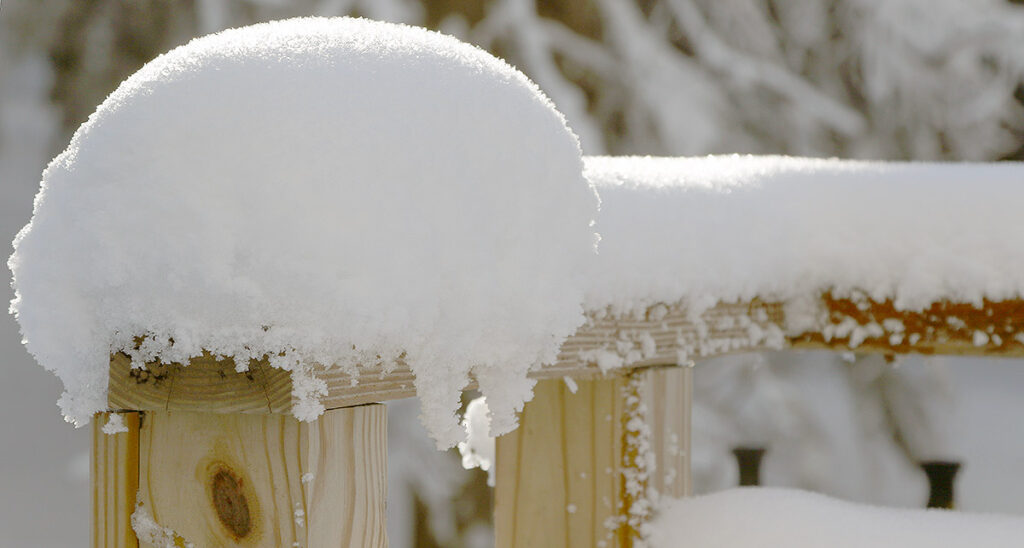
My target terrain for today was some of the lower angle slopes in the Moose Glen/White Rabbit area. I hadn’t been up there in a while, and it turns out there was a lot of terrain that was steeper than I’d remembered, especially in the initial parts of the descent dropping down from Stowe View and Moose Glen. Although that terrain was a bit steep for today’s conditions, the visit did serve as a reminder to get out there when the powder is a bit deeper, because the terrain is quite expansive. I eventually got into more of the lower angle terrain that I’d remembered, and that offered some nice powder turns with similar consistency to what I’d experienced yesterday. Overall I’d say yesterday’s tour had a slightly higher yield in terms of catching smooth, bottomless turns on the right terrain, but today being Sunday, it did mean another full day of visitors getting out there in the snow. Even on the backcountry network, traffic eventually tracks up the snow, and with these conditions, you really needed untracked snow for the best turns. Just one pass through the snow by another skier makes a big difference with these lighter accumulations.

One neat thing I did see today while heading up Birch Loop was a skier returning from out on the Catamount Trail heading toward Bryant Cabin. There’s a bit of rolling terrain there that isn’t optimal for having skins either on or off, and what he did was to have a skin on one ski but not the other. When he was skiing, he was one-footing it on the ski with no skin for maximum glide, and then he could use the other ski with the skin on it for better grip going uphill. I thought that was a pretty slick compromise for that sort of rolling terrain. Being on Telemark gear, I typically just go without skins on rolling terrain since herring boning on the uphill sections is simpler with the light gear, but that guy’s technique could be a nice way to go on a heavier setup like alpine touring gear.
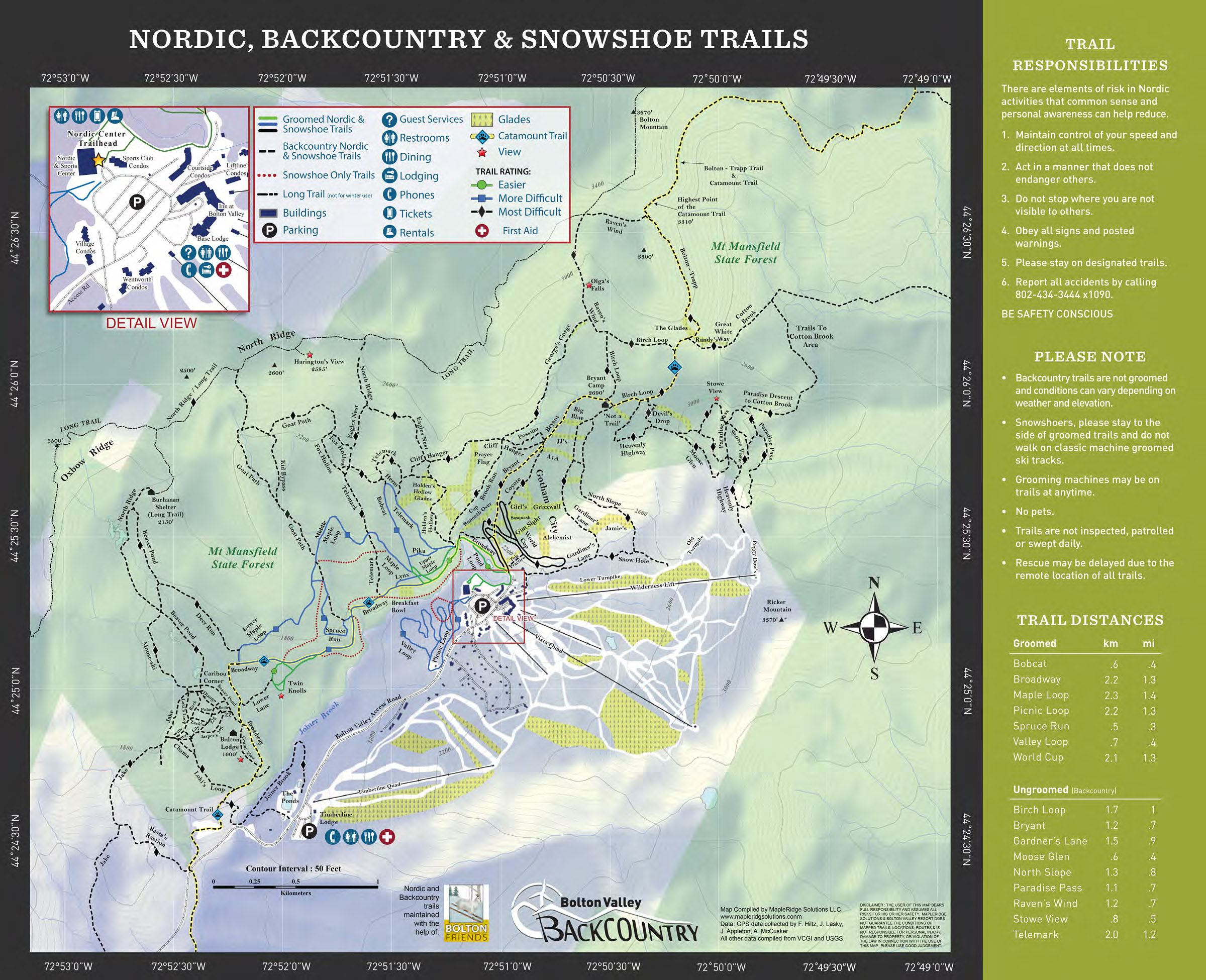
The snowpack out there is midwinter deep and ready for prime time as soon as we get another decent storm – let’s hope something pops up before mid-month so we don’t have to spend another ten days in this veritable snowfall desert.
